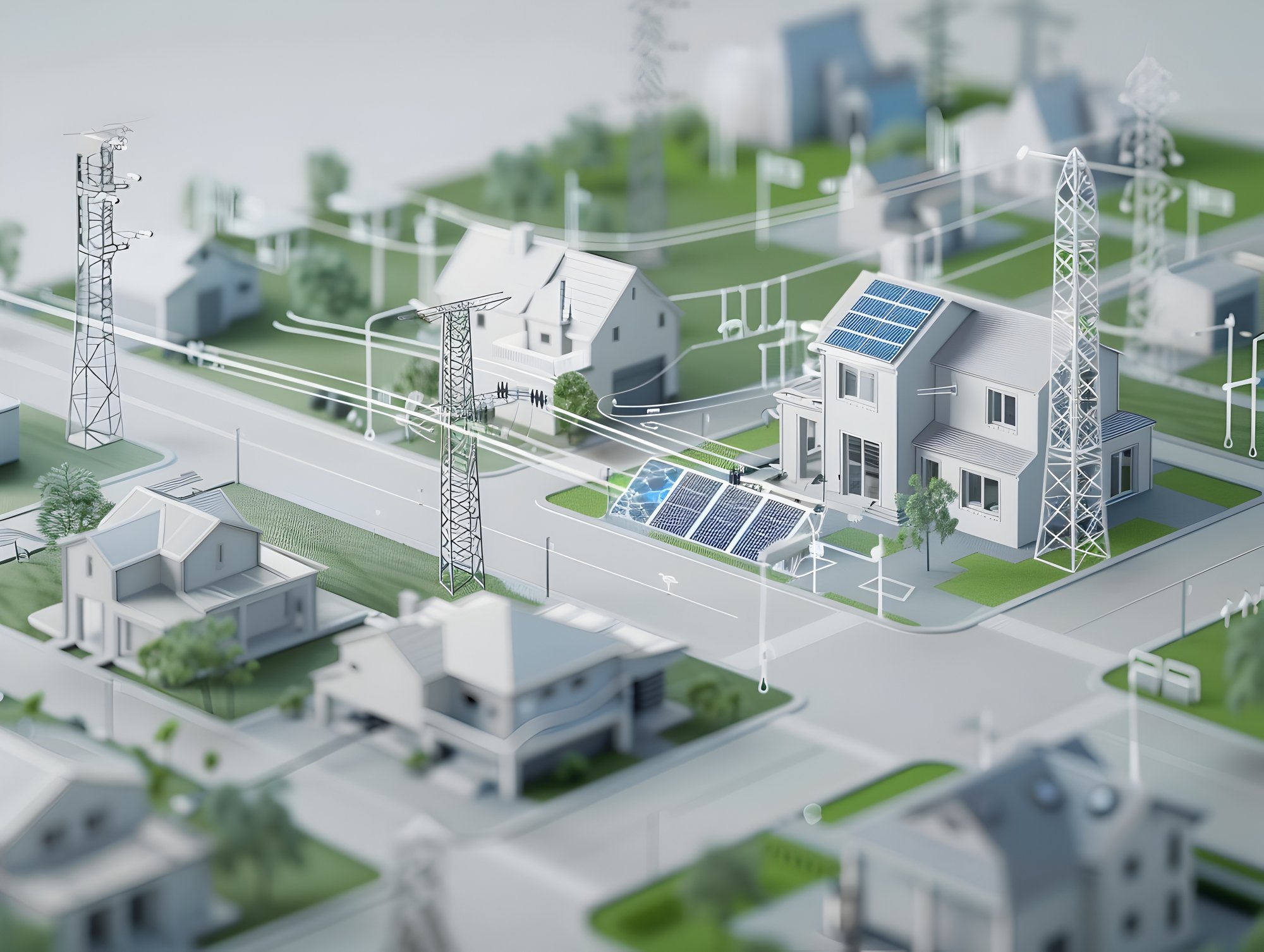
Customer-Driven DER Adoption vs. Utility-Led DER Deployment
The way we power our homes and businesses is changing rapidly. As renewable energy sources like solar and wind become more affordable and battery storage technology advances, distributed energy resources (DERs) are playing an increasingly important role in our electricity system. However, the current model of relying on third-party developers to deploy DERs in a piecemeal fashion is not the most effective path forward. For DERs to truly transform our grid and provide maximum benefits, utilities must take the lead on strategically deploying these assets at scale.
The concept of a virtual power plant (VPP), where DERs like solar panels, batteries, smart thermostats and electric vehicles are aggregated and coordinated to mimic a traditional centralized power plant, has gained a lot of attention in recent years. Several utilities and energy companies have launched VPP pilot programs, demonstrating the potential of this approach. However, most of these programs rely on customers to purchase the equipment and opt-in to participation. This model has limitations in terms of the speed and scale at which DERs can be deployed to meet the growing capacity needs of the grid.
Capturing the Full Potential of DERs Requires Utility Leadership
Some argue that utility control over DERs presents an unfair competitive advantage and limits customer choice. But the reality is that relatively nascent VPP markets simply can't deliver DERs at the pace and scale needed to support the clean energy transition. Utility leadership is essential to capturing the full potential of distributed resources. As RMI has noted, by 2030 VPPs nationally could reduce peak demand by 60 GW and save $17 billion annually — but only if we rapidly accelerate deployment.
Innovative utilities are already proving out the DCP model, with ambitious proposals to install hundreds of megawatts of networked solar and storage in the coming years. These utility-led DER programs will save ratepayers money, enhance grid resilience, enable more renewable integration, and create local economic opportunities.
Utility-Led DERs: The Advantages of Distributed Capacity Procurement
This is where utility-led DER deployment comes in. By proactively installing solar, storage and other assets in targeted locations, utilities can roll out DERs much faster and ensure they are strategically placed to provide maximum grid benefits. This "distributed capacity procurement" (DCP) model allows utilities to treat DERs as an extension of their system planning toolkit, utilizing them alongside traditional infrastructure investments.
There are several key advantages to the DCP approach:
Accelerating the Clean Energy Transition
Utility-led DER programs can deploy assets at a much larger scale and faster pace compared to piecemeal, customer-driven adoption. This is critical for meeting aggressive carbon reduction targets.
Enhancing Grid Resilience and Flexibility
By being purposeful about where DERs are placed, utilities can target constrained areas of the grid, deferring or avoiding expensive infrastructure upgrades. Aggregated DERs can also provide valuable services like peak demand reduction, frequency regulation, and backup power during outages.
Lowering Costs for All Ratepayers
Although utility-owned DERs require upfront capital investment, they can provide net cost savings to all ratepayers by reducing the need for more expensive generation, transmission and distribution investments. Unlike customer-owned assets, utility-led DERs allow all ratepayers to benefit even if they can't afford the equipment themselves.
Promoting Energy Equity
Utility-led DER programs can help address energy disparities by ensuring underserved communities can access clean, resilient energy resources. Strategic placement of community solar and storage can lower energy burdens while providing local economic development opportunities.
Benefits for Local Communities and Vendors
In addition to the advantages for utilities and ratepayers, DCP programs significantly benefit local communities and the vendors and developers who supply DER technologies and services. For local communities, DCP initiatives can:
- Enhance energy resilience and reliability by strategically deploying DERs in areas prone to outages or grid constraints. This improves quality of life and supports critical facilities during emergencies.
- Stimulate local economic development and job creation in the clean energy sector. Large-scale utility programs create predictable long-term demand for solar, storage and energy services.
- Promote energy equity and expand access to the benefits of clean energy. Through utility-led DER programs, all residents and businesses can participate even if they can't afford to purchase equipment.
- Contribute to local sustainability and climate action goals by accelerating the transition to emissions-free renewable energy.
For DER vendors and developers, participating in DCP programs offers:
- Accelerated technology deployment and market growth. Utility-led DER programs aim to massively scale installations, creating a robust pipeline of projects for the industry.
- Reduced risks and more predictable demand. By incorporating DERs into grid planning, utilities provide clear long-term visibility for procurement. This lowers risks compared to piecemeal projects.
- Streamlined permitting and interconnection. Utility involvement can help fast-track siting and interconnection, reducing soft costs and shortening project timelines.
- Access to new markets and customers. Utility-led DER programs can expand the geographic reach and open up customer segments that may have been hard to access through traditional sales channels.
- Enhanced credibility and bankability. Utility backing increases customer trust in vendor offerings regarding product quality, maintenance and performance over time.
By delivering these tangible benefits to local communities and industry partners, utility-led DER programs can build broad support for a more distributed energy future. As utilities take a proactive role in scaling DERs, they create a rising tide that lifts all boats, enabling a cleaner grid while creating societal benefits and economic opportunities.
Embracing a Distributed Energy Future
The future grid will undoubtedly be more distributed and decentralized. Utilities can proactively shape that future by taking a leadership role in DER deployment. With strategic planning and targeted programs, utilities can pave the way for a cleaner, more resilient, and more equitable energy system. It's time to embrace the potential of utility-led DERs at scale.
To Learn more About the Impact of Utility-Led DERs Reach Out Today!